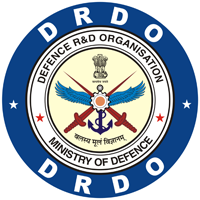Hydrodynamic Modelling of Tides and Tidal Currents in Cochin Estuary
DOI:
https://doi.org/10.14429/dsj.21342Keywords:
Tidal current, Tidal constituents, Numerical modelling, Cochin estuaryAbstract
The present study utilized two-dimensional numerical modelling to understand the tides and tidal currents in the Cochin estuary. The model shows a relatively good comparison with observation. In the estuary, the dominant constituent is M2 followed by K1, S2, and O1. The Form Numbers indicated that the tide is mixed, the mainly semi-diurnal tide having values ranging from 0.80 - 0.85, with the lowest Form number at the mouth of the estuary. The study reveals a significant relationship between dredge depth and tidal current speed in the narrow region of the mouth of the Cochin estuary. It is found that when the depth is decreased to 5 m and is increased to 20 m at mouth the current speed increases about 0.06 m/s and decreases about 0.24 m/s respectively. Tidal velocity is about 0.3 m/s near the inlet and a decreasing towards upstream. Tidal current analysis for M2 shows, U amplitude of 0.3 m/s at the mouth of the estuary, decreasing to 0.03 m/s in the northern and southern arms, while V amplitude ranges from 0.03 – 0.21 m/s towards the northern arm. For K1, the U amplitude reduces from 0.15 m/s at the mouth of the estuary to 0.03 m/s in both the arms with V amplitude higher in the northern arm than the southern arm. This research will enhance our understanding of tidal hydrodynamics in the estuary, contributing to sustainable estuarine management.
Downloads
Published
How to Cite
Issue
Section
License
Copyright (c) 2025 Defence Scientific Information & Documentation Centre (DESIDOC)  Where otherwise noted, the Articles on this site are licensed under Creative Commons License: CC Attribution-Noncommercial-No Derivative Works 2.5 India
Where otherwise noted, the Articles on this site are licensed under Creative Commons License: CC Attribution-Noncommercial-No Derivative Works 2.5 India

